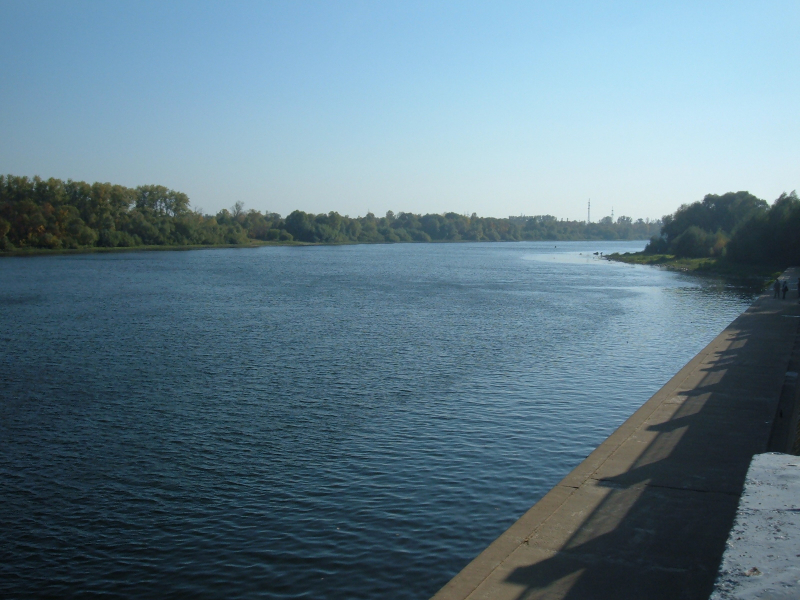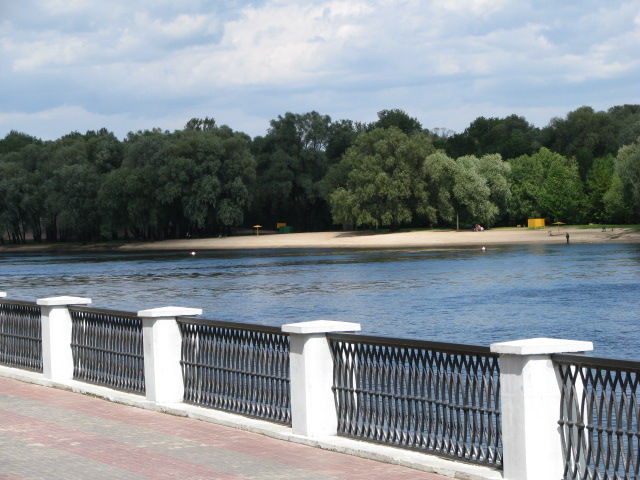Sozh

The Sozh, also known as the Sož, is a river that flows through Russia, Belarus, and Ukraine. It is a Dnieper tributary on the left bank. The Sozh River runs through Gomel, Belarus's second largest city. The river is crossed by the Sozh Floating Bridge in Korma and an elegant steel arch in Gomel, which is featured on a 300 ruble national stamp.
The Sozh River rises in Russia and is mostly fed by snow. Between November and early January, the river freezes over. The ice begins to melt in late March or early April. Its main tributaries are the Vikhra and Pronia on the right, and the Ostyor, Besed, Iput, and Uts on the left. It is one of six 500-kilometer-long tributaries that join the Dnieper, Europe's third-longest river (2,201 km).
In its upper reaches, where it is navigable from Krichev, the river is equipped with navigational locks. The river is flooded with timber.
The river's mouth is 150m wide and swampy. The river's catchment area is 42,140 square kilometers (16,270 square miles) along its 648-kilometer (403-mile) length, 21,700 square kilometers (8,400 square miles), and 493 kilometers (306 miles) within Belarus. The average discharge measured at Gomel, 100 kilometers (62 miles) upstream of the mouth, is 207 m3/s.
Krichev, Cherikov, Slavgorod, Gomel, and Vetka are historic towns on the banks of the main river and its tributaries.
The Sozh River in Russia originates in Smolensky District and flows through Pochinkovsky and Khislavichsky Districts of Smolensk Oblast. Khislavichi is a city-like settlement on the banks of the Sozh River. It flows further south, forming the border between Smolensk Oblast's Khislavichsky and Shumyachsky District in the east and Belarus's Mogilev Region in the west.
Length: 648 km (403 mi)











